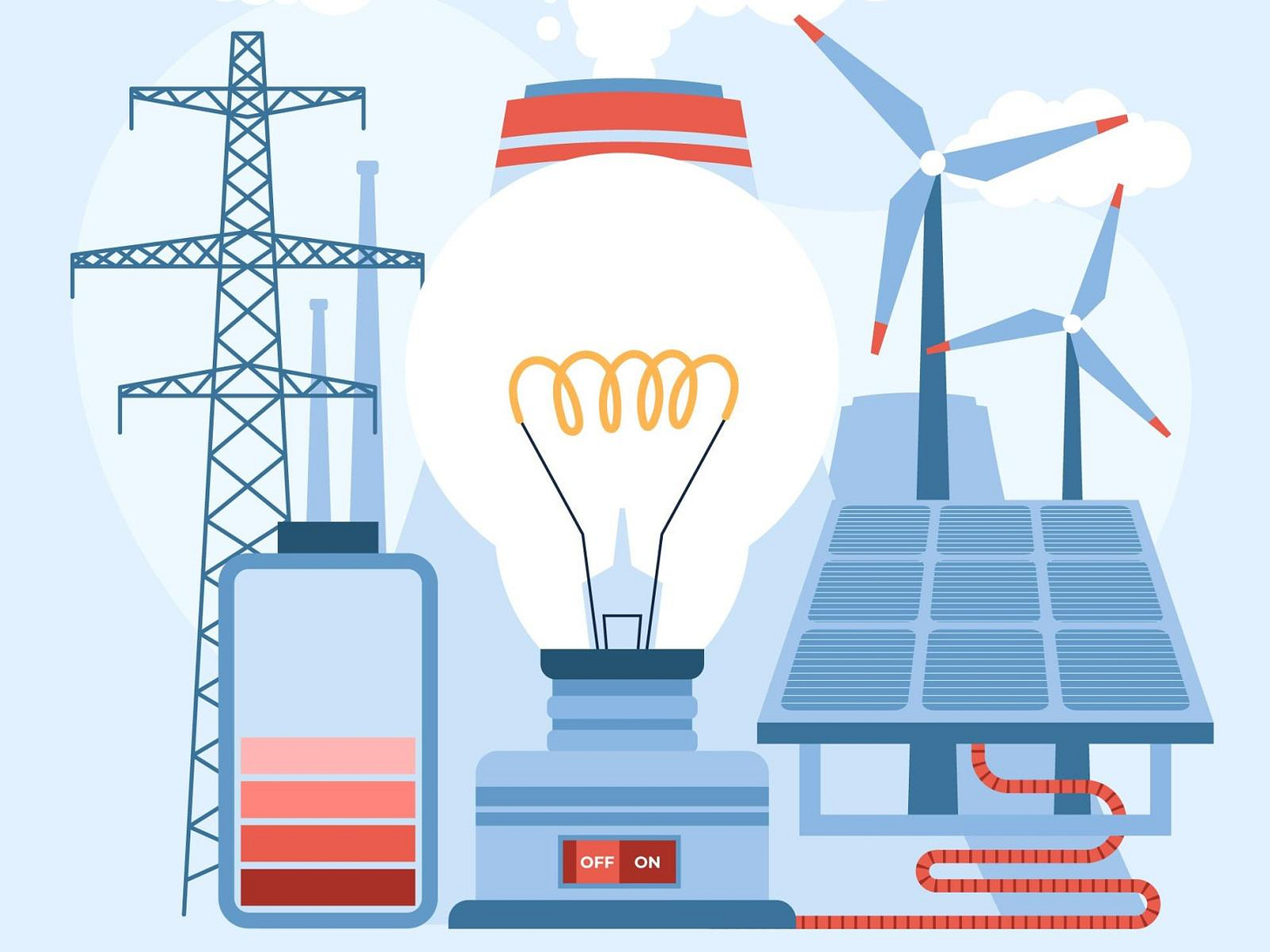GridStab News: Regular posts to demystify power system dynamics and stability
Topic of this week: Grid-following and Grid-forming control

Did you say “Grid-Following”?
Today, most of the Power-Electronic (PE) converters are in Grid-Following (GFL) control mode. This control relies on what is called a Phase Locked Loop to track (i.e. “follow”) the voltage evolution at the Point Of Connection (POC) and inject the appropriate current. This principle is illustrated in Fig. 1.
This means that, today, the majority of RES (e.g., Wind Turbines, Photovoltaic panels) and HVDC converter relies on a voltage reference provided by the grid in order to operate properly. Without a sufficiently stiff voltage reference, the PE converters cannot remain synchronized with the power system and become unstable which eventually lead to a disconnection.
And what about “Grid-Forming”?
Grid-Forming (GFM) control is a new type of control that is able to “form” the grid. What does that mean? It means that GFM converters do not rely on an external voltage reference to operate properly. They are able to provide they own internal voltage reference and hence actively set and regulate the voltage of the grid (refer to this article to know more about voltage control). This principle is illustrated in Fig. 2.
Does it sound familiar? Yes, Grid-Forming converters seem to operate like Synchronous Generators (SGs)! In fact, the original idea behind the Grid-Forming control is to mimic the behavior of synchronous generators to provide voltage/frequency control as well as “inertia” (refer to this article for more detailed on inertia and frequency dynamics).
Why evolving power systems need Grid-Forming control?
The previous articles have discussed the stability services provided by classic SGs (i.e., thermal power plants such as nuclear, gas or coal). Nowadays power systems still strongly rely on SGs to control the voltage and the frequency.
Driven by the energy transition, power systems are facing the progressive retirements of classic thermal power plants that are mainly replaced by RES connected to the grid through large PE Converters, which cannot provide the same stability services. It is then said that the power system becomes weaker and weaker (the concept of system strength will be discussed in a next article). In a weak system, voltage becomes more volatile and GFL converters (designed for strong system) cannot operate properly and are more prone to disconnection, which is critical for the grid stability.
In order to operate safely the energy transition of power systems, it is then understood that a more robust control is required for future RES. That is when GFM control comes into play. Since GFM converters do not rely on a stiff voltage reference (i.e., on a strong grid) to operate, they are more robust in weak grid situation and hence this significantly reduces the risk of RES disconnections and grid instability.
In addition to being more robust, GFM converters can also provide voltage and frequency control, as well as inertia (usually called “synthetic” inertia, as not coming from rotating masses). In other words, GFM converters are more robust in weak grid conditions, but also increase the strength of the system through the provision of stability services, which also supports the safe operation of standard GFL converters.
Grid-Forming: the silver bullet to achieve 100 % RES?
Even if GFM control appears as a solution to achieve one day 100 % RES in power systems, it has its own risks/limitations:
Cannot provide large short-circuit current like SGs (usually up to 5-6 times they rating current). Indeed PE electronic converters cannot withstand a current more than usually 110-120% of their rating during a limited amount of time. This can be a major threat since most of power system protections rely on current magnitude to detect short-circuits. The only way to cope with that limitation would be to overrate the converter, but this comes with significant costs.
Depending on the asset, the technological readiness level (TRL) can be low, there are still limitations to have Grid-Forming control and provision of “synthetic” inertia for Wind Turbines and HVDC system. Today, the limited amount of GFM converters in operation are almost only battery energy storage system (BESS).
The performance of GFM converters facing short-circuit is not yet clear. Indeed, if the short-circuit is close of the converter, the latter will most probably reach the current limiters (due to limited rating of PE converters). During this period, the converter is no longer able to be in GFM control mode, it is in a “current limitation” mode such as the difference between the grid voltage angle and the internal converter angle can significantly deviate from the reference. The dynamic performance when the fault is cleared and the converter goes back to GFM control is not yet guaranteed.
There are also little knowledge about how these new GFM converters will interact with other power system equipment’s. GFM converters could introduce new interaction phenomena.
Today, it not yet guaranteed that GFM converters will be the silver bullet, mainly because of the lack of return of experience with the integration of multiple large GFM converters in real networks.
The end of Grid-Following converters?
Finally it is important to emphasize that GFL converters will continue to play a key role in the safe energy transition. Indeed, while GFL control has been designed for strong grid conditions, controllers can be retuned to be able to cope with weaker grid conditions and reduce the risk of maloperation. This robust returning is a very important step to cope with reduction of system strength while waiting for wide-spread integration of GFM converters. In addition, modern GFL control are also able to provide Fast Frequency Response which allows to cope with the lower amount of SGs online and limit the frequency deviation in case of power imbalance.
The difference between Fast Frequency Response provided by GFL converter and “synthetic” inertia that can be provided by GFM control will be the topic of the next article.





